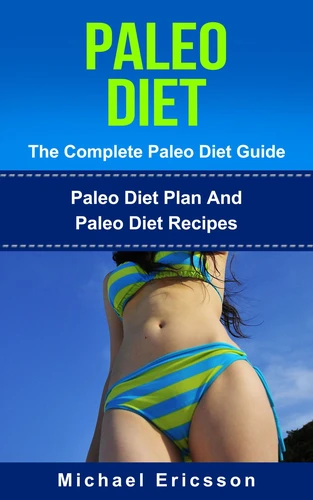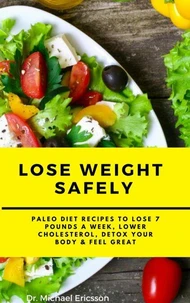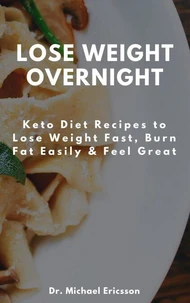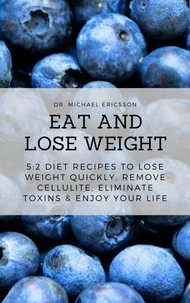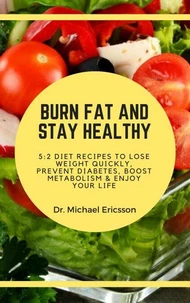Paleo Diet - The Complete Paleo Diet Guide: Paleo Diet Plan And Paleo Diet Recipes
Par :Formats :
Disponible dans votre compte client Decitre ou Furet du Nord dès validation de votre commande. Le format ePub est :
- Compatible avec une lecture sur My Vivlio (smartphone, tablette, ordinateur)
- Compatible avec une lecture sur liseuses Vivlio
- Pour les liseuses autres que Vivlio, vous devez utiliser le logiciel Adobe Digital Edition. Non compatible avec la lecture sur les liseuses Kindle, Remarkable et Sony
 , qui est-ce ?
, qui est-ce ?Notre partenaire de plateforme de lecture numérique où vous retrouverez l'ensemble de vos ebooks gratuitement
Pour en savoir plus sur nos ebooks, consultez notre aide en ligne ici
- FormatePub
- ISBN978-1-5070-3743-0
- EAN9781507037430
- Date de parution04/04/2015
- Protection num.pas de protection
- Infos supplémentairesepub
- ÉditeurIncantatrix Press
Résumé
This book contains proven steps and strategies on how to follow the natural diet that we are genetically adapted to. I will be discussing how and why the Paleo diet works. There are also sample Paleo recipes and diet plans included in the last chapter that you can use to create your own. With all the diet systems around, it can be quite confusing which one to follow. Most, especially the recent ones, advocate calorie restriction.
Others seem to contradict good nutrition by recommending consumption of meats and even fat. But all are unanimous to a single goal - weight loss. If you bought and downloaded this book, chances are you are looking for a diet system that will help you realize your goals. You want to lose excess weight, curb fat and have a healthier body. This is where the Paleo diet system can help. The Paleo diet - a 15, 000-year historyWhile most diet patterns have just been invented or introduced during the last century, the Paleo diet traces back its history to ten and a half centuries ago.
Back when men where hunters and gatherers - when we were living inside caves. Also known as the Paleolithic diet, caveman diet, Stone Age diet, or hunter-gatherer diet, the Paleo diet is based on the presumption of what our ancestors ate fifteen thousand years ago. The Paleo diet also theorizes that our genetics haven't changed much since the Paleolithic period ended, meaning we are not adapted to the produce of modern agriculture.
It's like a hundred-yard football field and we have been running the first 99.5 yards living on the Paleo diet, and the last 0.5 yards is the invention of agriculture. That would mean eating what cavemen could find or hunt - fish, meats, nuts, regional veggies, leafy greens, and seeds. If you notice that grains are not part of the Paleo diet, it is because people during that age haven't learned farming yet.
They move from place to place hunting for wild animals, and gathering what the ground can provide them. They had no bread back then. No pasta. Not even potatoes. And how did they live 15, 000 years ago? An average Homo Sapien during the Paleolithic period was muscular, tall, athletic, agile, and very versatile.
Others seem to contradict good nutrition by recommending consumption of meats and even fat. But all are unanimous to a single goal - weight loss. If you bought and downloaded this book, chances are you are looking for a diet system that will help you realize your goals. You want to lose excess weight, curb fat and have a healthier body. This is where the Paleo diet system can help. The Paleo diet - a 15, 000-year historyWhile most diet patterns have just been invented or introduced during the last century, the Paleo diet traces back its history to ten and a half centuries ago.
Back when men where hunters and gatherers - when we were living inside caves. Also known as the Paleolithic diet, caveman diet, Stone Age diet, or hunter-gatherer diet, the Paleo diet is based on the presumption of what our ancestors ate fifteen thousand years ago. The Paleo diet also theorizes that our genetics haven't changed much since the Paleolithic period ended, meaning we are not adapted to the produce of modern agriculture.
It's like a hundred-yard football field and we have been running the first 99.5 yards living on the Paleo diet, and the last 0.5 yards is the invention of agriculture. That would mean eating what cavemen could find or hunt - fish, meats, nuts, regional veggies, leafy greens, and seeds. If you notice that grains are not part of the Paleo diet, it is because people during that age haven't learned farming yet.
They move from place to place hunting for wild animals, and gathering what the ground can provide them. They had no bread back then. No pasta. Not even potatoes. And how did they live 15, 000 years ago? An average Homo Sapien during the Paleolithic period was muscular, tall, athletic, agile, and very versatile.
This book contains proven steps and strategies on how to follow the natural diet that we are genetically adapted to. I will be discussing how and why the Paleo diet works. There are also sample Paleo recipes and diet plans included in the last chapter that you can use to create your own. With all the diet systems around, it can be quite confusing which one to follow. Most, especially the recent ones, advocate calorie restriction.
Others seem to contradict good nutrition by recommending consumption of meats and even fat. But all are unanimous to a single goal - weight loss. If you bought and downloaded this book, chances are you are looking for a diet system that will help you realize your goals. You want to lose excess weight, curb fat and have a healthier body. This is where the Paleo diet system can help. The Paleo diet - a 15, 000-year historyWhile most diet patterns have just been invented or introduced during the last century, the Paleo diet traces back its history to ten and a half centuries ago.
Back when men where hunters and gatherers - when we were living inside caves. Also known as the Paleolithic diet, caveman diet, Stone Age diet, or hunter-gatherer diet, the Paleo diet is based on the presumption of what our ancestors ate fifteen thousand years ago. The Paleo diet also theorizes that our genetics haven't changed much since the Paleolithic period ended, meaning we are not adapted to the produce of modern agriculture.
It's like a hundred-yard football field and we have been running the first 99.5 yards living on the Paleo diet, and the last 0.5 yards is the invention of agriculture. That would mean eating what cavemen could find or hunt - fish, meats, nuts, regional veggies, leafy greens, and seeds. If you notice that grains are not part of the Paleo diet, it is because people during that age haven't learned farming yet.
They move from place to place hunting for wild animals, and gathering what the ground can provide them. They had no bread back then. No pasta. Not even potatoes. And how did they live 15, 000 years ago? An average Homo Sapien during the Paleolithic period was muscular, tall, athletic, agile, and very versatile.
Others seem to contradict good nutrition by recommending consumption of meats and even fat. But all are unanimous to a single goal - weight loss. If you bought and downloaded this book, chances are you are looking for a diet system that will help you realize your goals. You want to lose excess weight, curb fat and have a healthier body. This is where the Paleo diet system can help. The Paleo diet - a 15, 000-year historyWhile most diet patterns have just been invented or introduced during the last century, the Paleo diet traces back its history to ten and a half centuries ago.
Back when men where hunters and gatherers - when we were living inside caves. Also known as the Paleolithic diet, caveman diet, Stone Age diet, or hunter-gatherer diet, the Paleo diet is based on the presumption of what our ancestors ate fifteen thousand years ago. The Paleo diet also theorizes that our genetics haven't changed much since the Paleolithic period ended, meaning we are not adapted to the produce of modern agriculture.
It's like a hundred-yard football field and we have been running the first 99.5 yards living on the Paleo diet, and the last 0.5 yards is the invention of agriculture. That would mean eating what cavemen could find or hunt - fish, meats, nuts, regional veggies, leafy greens, and seeds. If you notice that grains are not part of the Paleo diet, it is because people during that age haven't learned farming yet.
They move from place to place hunting for wild animals, and gathering what the ground can provide them. They had no bread back then. No pasta. Not even potatoes. And how did they live 15, 000 years ago? An average Homo Sapien during the Paleolithic period was muscular, tall, athletic, agile, and very versatile.

